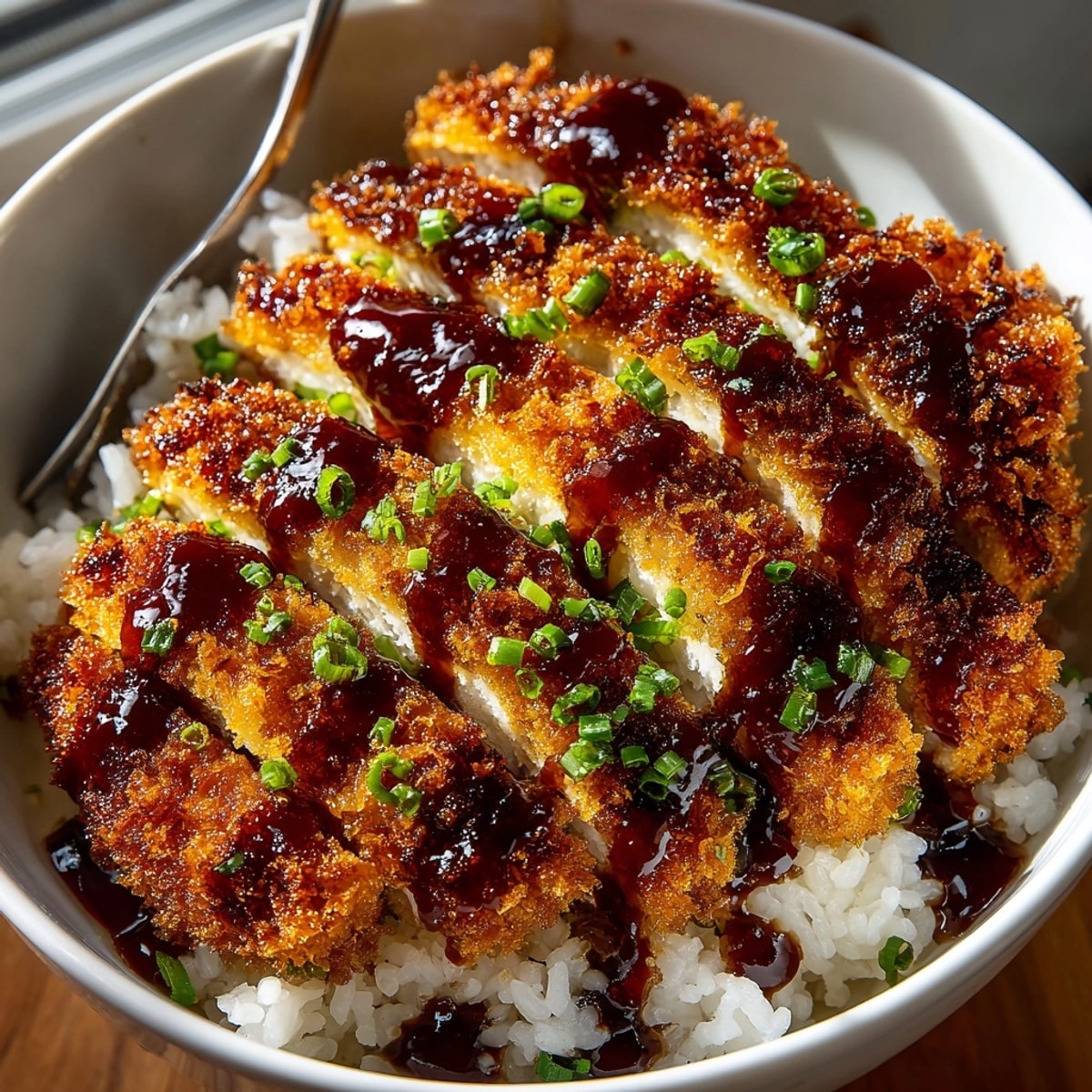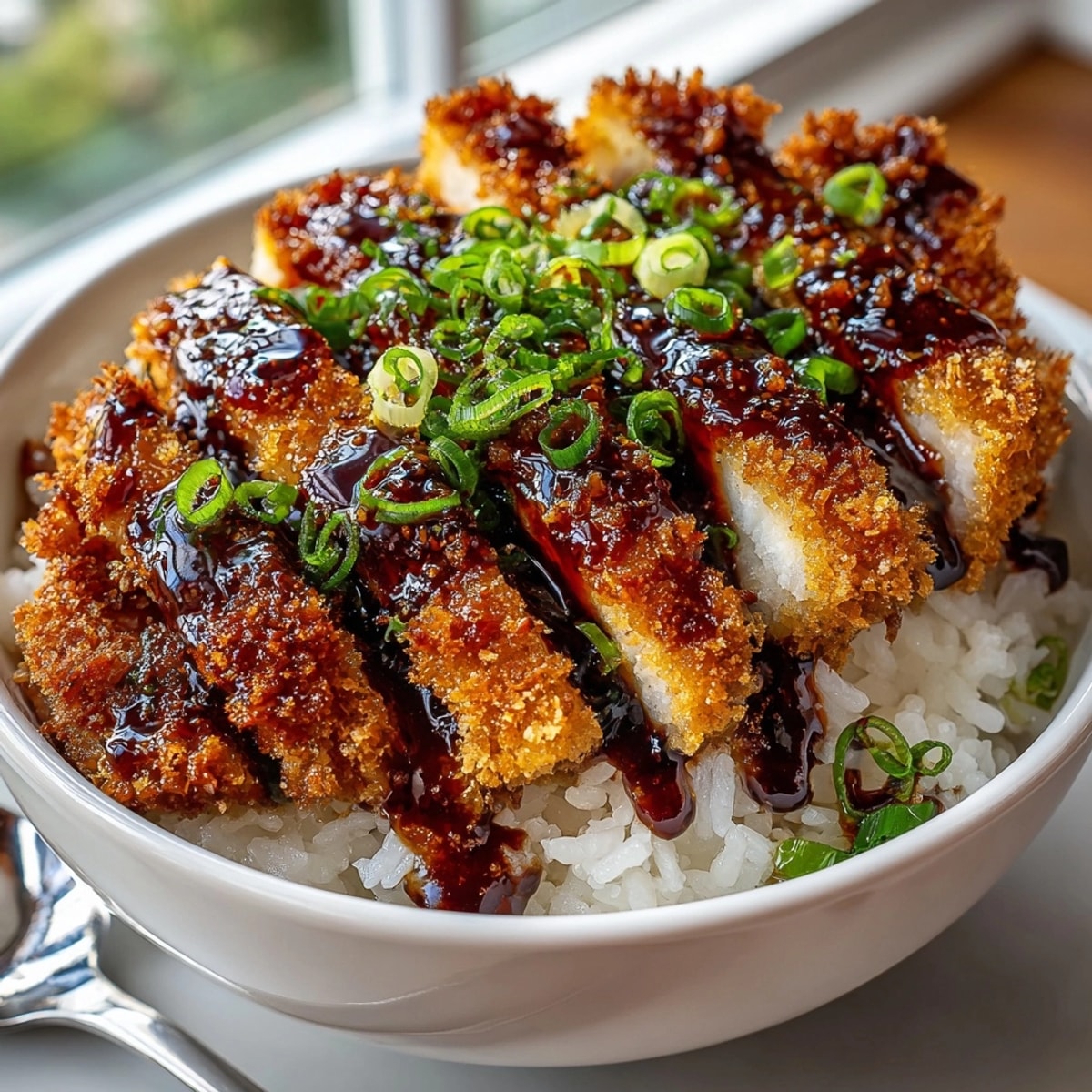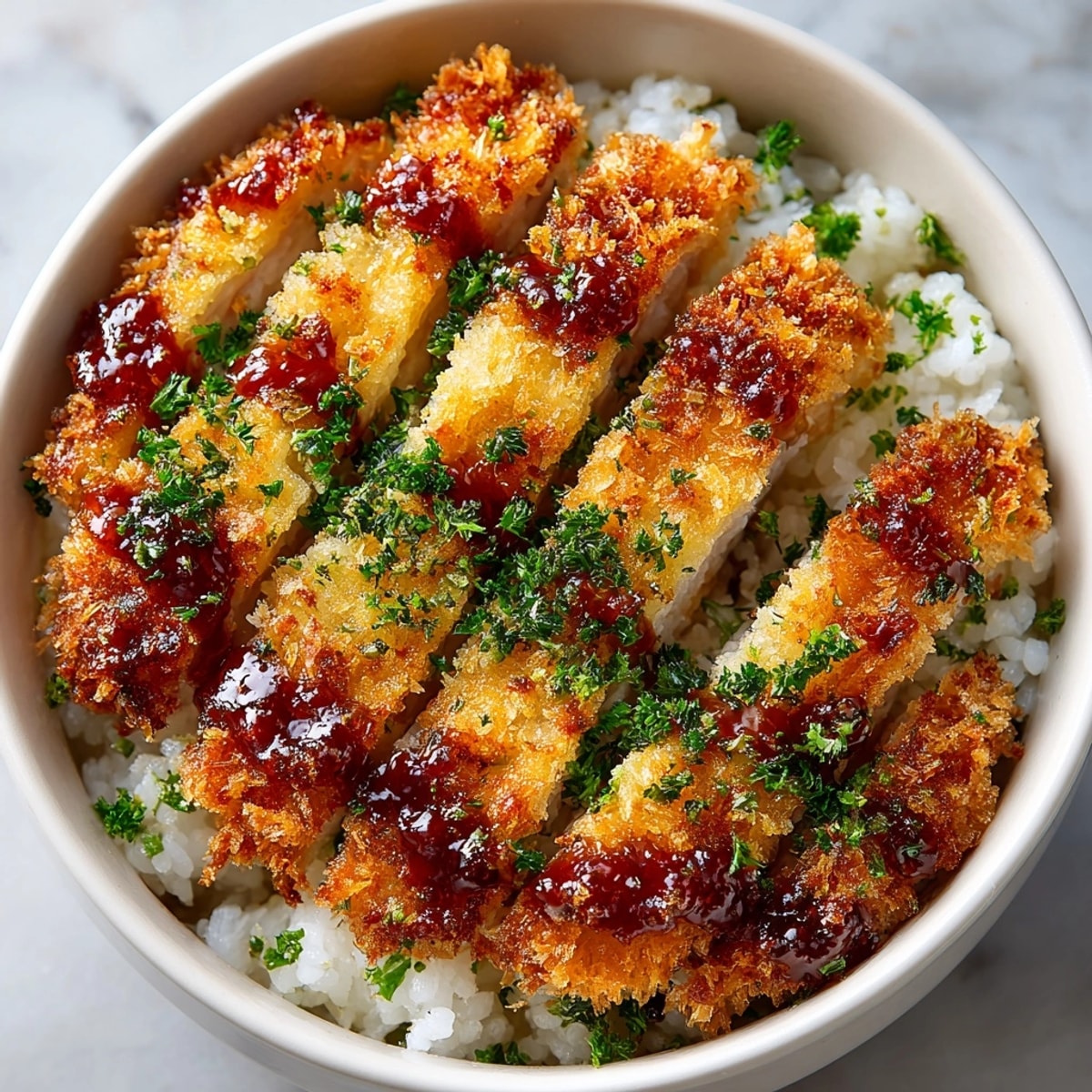 Save
Save Japanese Katsu Bowls with Tonkatsu Sauce are my go-to solution for a takeout-style dinner in less than thirty minutes. The combination of crispy, juicy cutlets over soft rice with a tangy-sweet sauce makes every bite pure comfort, and it always manages to impress guests or satisfy a weeknight craving.
I started making katsu at home after craving it from my favorite local restaurant. Once my family tasted this homemade version, it quickly became a dish they beg me for when they want something special but not fussy.
Ingredients
- Boneless chicken breasts or pork loin cutlets: choose ones with a smooth surface and pale color for juiciness
- Panko breadcrumbs: gives the ultimate crispy coating look for pale, fluffy flakes
- All-purpose flour: ensures the breading sticks and fries evenly stick to unbleached flour for a nice crust
- Large eggs: binds the crumb to the meat use fresh eggs for best results
- Cooked white rice: sushi rice is best for plump, sticky grains try short-grain if you can
- Tonkatsu sauce: sweet and tangy choose a high-quality store-bought bottle or make your own for freshness
- Oil for frying: look for neutral oils like vegetable or canola that can handle high heat
- Fresh parsley or green onion: brightens each bite pick crisp, vibrant herbs for garnish
- Ketchup: adds body and color to homemade tonkatsu sauce
- Worcestershire sauce: brings sharp umami flavor check the label for real anchovy for authenticity
- Soy sauce: balances salt with savoriness use a naturally brewed variety
- Sugar: a touch of sweetness rounds out the sauce
Instructions
- Prepare the Cutlets:
- Pound your chicken or pork cutlets to half an inch thick using a meat mallet. Season liberally with salt and pepper on both sides to ensure every bite is flavorful.
- Set Up the Breading Station:
- Arrange three shallow bowls. Pour flour into the first, beaten eggs into the second, and panko into the third. Have your cutlets nearby to streamline the process.
- Bread the Cutlets:
- Coat each cutlet thoroughly in flour first, tapping off the excess. Next, dip it into the beaten eggs to moisten all sides. Finish by covering completely in panko, pressing lightly so the crumbs adhere well.
- Heat the Oil:
- Pour enough oil into a wide skillet to cover the bottom by roughly a quarter inch. Heat over medium-high until the oil simmers and a breadcrumb dropped in sizzles immediately.
- Fry the Cutlets:
- Gently lay cutlets in the hot oil, leaving space so they crisp instead of steam. For chicken, fry three to four minutes per side. For pork, two to three minutes per side is enough. They should be deeply golden and cooked through. Let them rest on a plate lined with paper towels.
- Make the Tonkatsu Sauce:
- If going homemade, whisk together ketchup, Worcestershire sauce, soy sauce, and sugar until smooth. Taste and, if you want it sweeter or tangier, tweak to your liking.
- Assemble the Bowls:
- Fill each bowl with steamed rice. Slice each cutlet into strips and arrange on top. Generously spoon over the prepared tonkatsu sauce. Garnish with green onion or parsley for a fresh finish.
 Save
Save My kids love to help beside me at the breading station and sneak a spoonful of tonkatsu sauce before the bowls are even assembled. For me, the crunchy panko coating is always the star and totally worth the washing up.
Storage Tips
To keep cutlets crispy, place leftovers on a wire rack over a tray in the fridge and cover loosely. This helps preserve their crunch instead of steaming them soft. Reheat in the oven at three hundred fifty degrees until hot, then serve immediately.
Ingredient Substitutions
If panko is unavailable, use fresh breadcrumbs and toast them until crisp for a similar texture. For those avoiding gluten, rice flour and gluten-free breadcrumbs work well in a pinch. If you need a vegetarian option, extra-firm tofu pressed and sliced holds up well and takes on flavor from the katsu sauce just as deliciously.
Serving Suggestions
Layer some thinly sliced cabbage beneath the cutlets for traditional presentation and extra crunch. Drizzle with extra sauce and scatter sesame seeds for a little texture. For sides, try a simple miso soup, pickled cucumbers, or a light green salad.
Cultural and Historical Context
Katsu appeared in Japan in the late nineteenth century as a take on European cutlets, but the Japanese twist with panko and sweet sauce quickly made it a home dining classic. For many Japanese families and diners worldwide, katsu means comfort and is a symbol of celebration or reward after a long week.
Seasonal Adaptations
Swap in sweet potato slices instead of meat for a fall-inspired version Pair with steamed broccoli or snap peas in spring to keep it light During winter, cook katsu and serve over hot curry sauce for an extra warming bowl
Success Stories
A friend made these the first time for a cozy at-home date night and said her partner was amazed it was homemade. Another home cook used pork and shared that her teenage kids asked for the crispy bowl every Sunday after soccer practice.
Freezer Meal Conversion
Bread and fry extra cutlets and freeze them in a single layer. To reheat, crisp them in a hot oven directly from frozen. The sauce keeps well in the fridge for a couple of weeks, so you can assemble a fresh bowl in minutes any busy night.
 Save
Save The magic of this dish really comes from taking time on the breading yet frying quickly and confidently. Once mastered, katsu bowls open up endless weeknight possibilities that taste a little like restaurant eating at home.
Recipe FAQ
- → Can I use pork instead of chicken?
Yes, both chicken and pork cutlets work beautifully. Use thin pork loin cutlets for best results.
- → What's the difference between panko and regular breadcrumbs?
Panko are Japanese-style breadcrumbs that provide extra crunch and a lighter texture once fried.
- → How do I ensure cutlets stay crispy?
Fry in hot oil (about 350°F), avoid overcrowding, and drain cutlets on paper towels immediately after frying.
- → Can I make tonkatsu sauce at home?
Absolutely. Mix ketchup, Worcestershire, soy sauce, and sugar for a quick homemade version.
- → What garnishes work best with katsu bowls?
Chopped parsley, sliced green onions, or even toasted sesame seeds add color and fresh flavor.